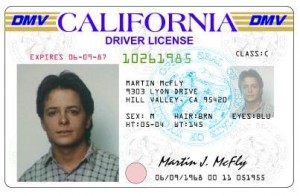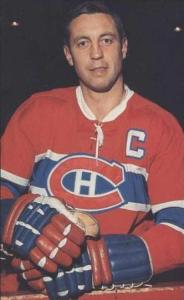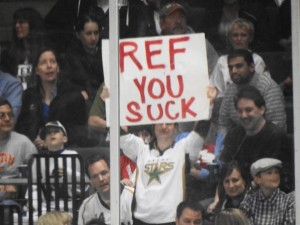5 November 1955 …

On this date in Hill Valley, California, young skateboarder Marty McFly drove a nuclear-powered DeLorean back in time, causing all manner of mayhem and putting his life and the lives of his family in jeopardy.
On the very same day, on the other side of the continent, the Montreal Canadiens played the Boston Bruins in what should have been a routine regular season game.
Instead, Montreal’s young star centerman Jean Beliveau played so well that the following year the NHL voted to change the rules so that he couldn’t play that well again.
The match had been uneventful until one of the Bruins was called for a minor penalty. In those days, a two minute minor was served in its entirety, the way a five minute major is served today.

Montreal—already playing a high-octane offensive game, one that came to be known as firewagon hockey—sent the power play unit onto the ice, and during that one penalty, Beliveau scored an astonishing four power play goals, including three in just 44 seconds (on no less a goaltender than Terry Sawchuk). The Canadiens won the game by a score of Beliveau 4, Boston 2
On 6 June 1956, the NHL Board of Governors met and decided that the rule needed to be changed; from then forward, the penalized player could return to the ice before his time was up if his team gave up a goal.
This 56-year experiment has been played out. It is time to tinker with the rules and re-instate the old rule and see how it can help today’s game.
Other efforts by the league to boost scoring have by-and-large failed. But in requiring a player serve his full two minutes in the box, the league has a chance to implement a potentially win-win rule.
Consider this: It stands to reason that more power play time should produce more goals. That would be a success for the league. If it fails to produce more goals, the most likely explanation will be because players are committing fewer infractions. Taking fewer penalties speeds up the game, frees up the officials to make more precise calls, opens up the ice to the skill and finesse players, and should cut down on the kinds of infractions that lead to player injuries.

While I do think this idea ought to get its due, at the very least for a few trial months in the AHL, I can’t lay claim to coming up with it. To the best of my knowledge, the earliest mention of any variation on it can be found in Stan Fischler’s “On the Contrary” column for the 22 May 1981 issue of The Hockey News.
In it, he quotes (the late) NHL executive Munson Campbell, who suggested:
Every time a player is whistled off for a stick penalty, the two minute penalty should be served in its entirety.
Fischler, who is in the midst of arguing that stick infractions are the source of the greatest amount of violence in the game, offers his own addendum or alternative:
Make any stick infraction a three minute penalty to be served in its entirety.
So as to avoid complications, the full two-minute rule should apply to all minor penalties as they are called, including:
- Section 6 physical fouls (Boarding, Roughing, Slew-footing, Charging, etc)
- Section 7 restraining fouls (Holding, Hooking, Interference, Tripping)
- Section 8 stick fouls (Butt-ending, Cross-checking, High-Sticking, Slashing, etc)
- Section 9 miscellaneous fouls (Diving, Delay of Game, etc)
A double-minor would be the simple equivalent of a four-minute major.
Limiting a team’s power play prowess to a single goal per penalty effectively punishes that team for being successful. It rewards the short-handed team by limiting their exposure to that strong power play.
And that’s nonsense.
And another thing: Why is clearing the puck allowed after committing the penalty? You can’t clear the puck (icing) during normal play, so why is it that you get away with doing it after an infraction? Also on a side note: Why is the away team required to lay their stick down in the face off first, allowing the home team to (although they shouldn’t) produce momentum before the puck drop. Seems odd.